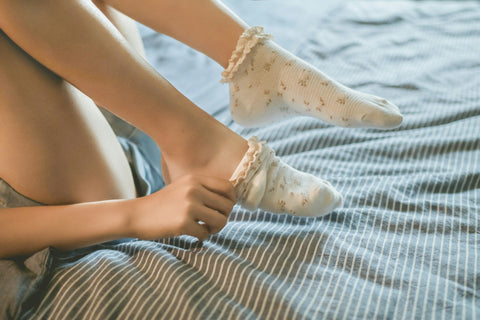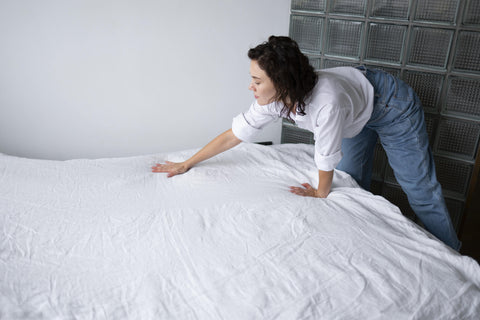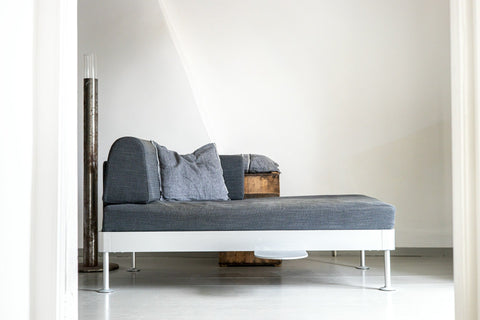
When you're battling allergies or sensitive skin, every little detail counts, even the bedding you choose. Say, for instance, that you finally find some hypoallergenic sheets that look stylish and affordable, then you discover they’re made of microfiber. Is microfiber hypoallergenic? Will these sheets trigger your allergies, or will they be safe for you? This article will help you answer these questions, so you can confidently choose microfiber bedding that is safe, gentle, and won’t trigger allergies, letting you enjoy restful sleep without skin irritation or sneezing. We will also touch upon Best Hypoallergenic Duvet Insert.
Yumerest’s solution to allergenic bedding is cloud-like fluffy duvets. With their plush, airy microfiber fill, these bed covers won’t irritate sensitive skin or trigger allergies. Instead, they provide a cozy yet breathable layer that will help you sleep comfortably and peacefully.
What Makes Your Sheets Hypoallergenic?

Hypoallergenic sheets are a good bedding option for those who suffer from allergies or have sensitive skin, but there's a lot to consider before scooping up the first set of "good-for-you" linens you find. Ahead, an allergist explains what, exactly, makes bedding hypoallergenic, and how to pick the best set for your needs.
How Hypoallergenic Sheets Protect Against Allergens
According to Sanjeev Jain, MD, a board-certified allergist and immunologist at Columbia Allergy, a product that is labeled "hypoallergenic" should reduce your chance of experiencing an allergic reaction while using it. "In the case of sheets, the fabric is tightly woven and made of a textile that is less likely to retain indoor allergen particles," he explains.
That tightly woven fabric protects you and your body from allergens that might be located in your mattress (like dust mites and mold) by creating a barrier between the mattress and your skin. "Hypoallergenic fabrics are typically breathable and promote a cool environment in which mold and bacteria cannot grow," he adds.
What Makes Bedding Hypoallergenic?
You're more likely to find hypoallergenic sheets made from natural fabrics such as cotton, bamboo, silk, and eucalyptus. "Synthetic fabrics, like microfiber, can also be hypoallergenic, but are not as breathable," adds Dr. Jain. "They may contain materials that are irritating to the skin."
Who Can Benefit from Hypoallergenic Sheets?
Allergies and Eczema If hypoallergenic sheets are for you, you should ask yourself if you suffer from sensitive skin, eczema, seasonal allergies, year-round allergies, or asthma.
"These sheets can help to reduce exposure to indoor allergens that trigger symptoms in these conditions and therefore reduce the number of flares and lessen overall symptoms," Dr. Jain notes, adding that patients with sensitive skin, in particular, may respond better to the hypoallergenic sheets that are made from natural fibers, as opposed to synthetics.
What to Look for When Shopping for Hypoallergenic Sheets
When shopping for hypoallergenic sheets, it is essential to consider fabrics that you find comfortable; they should also be easy to wash and maintain. And don't forget about the budget. "If price is a concern, cotton and microfiber hypoallergenic sheets may be the best option for you," Dr. Jain says.
Looking For A Great Source?
"The Asthma and Allergy Foundation of America has a list of products on their website that have been tested and proven to reduce exposure to allergens," he says. Sheets that are certified asthma- and allergy-friendly are a good option, since not all cotton, bamboo, silk, eucalyptus, or microfiber linens have the right composition to protect you from indoor allergens.
Good fabrication won't mean anything if you don't clean your linens regularly. "For the best results, the sheets should be able to be washed in hot water weekly to kill off any dust mites, mold spores, or other allergens that have settled on the fabric," he says.
What Else Should I Know About Hypoallergenic Bedding?
Just the Start. Dr. Jain suggests that if you're switching to hypoallergenic sheets, you may also want to transition the rest of your bedding to hypoallergenic alternatives.
"Even with hypoallergenic sheets, indoor allergens can still stick to your mattress, comforter, and pillows," he notes and suggests switching to hypoallergenic iterations of those, as well. "A dust mite cover for your mattress and pillows can also help to further protect you."
What Are the Pros and Cons of Hypoallergenic Bed Sheets?
The correct set of hypoallergenic bed sheets could reduce the inflammation and itching that plagues sensitive sleepers, so that you can sleep more comfortably. Hypoallergenic bed sheets should also help to bust bacteria and keep your bed clean.
Stay Cool and Dry with Hypoallergenic Sheets and Protectors
For optimal results, pair your hypoallergenic bed sheets with a high-quality mattress protector to safeguard against sweat and stains.
The vast majority of hypoallergenic bed sheets are made from natural fibers, which are naturally breathable and moisture-wicking. I'd recommend a set of hypoallergenic bed sheets for anyone looking to stay cool and dry this summer.
Hypoallergenic Sheets Worth the Splurge for Hot Sleepers
For seriously hot sleepers, I suggest pairing your sheets with the best cooling comforter. Admittedly, hypoallergenic bed sheets can be more expensive than cheap synthetic substitutes.
Any extra costs are worth it; you're paying for cleaner sheets to keep you comfortable and prevent you from scratching. To save you time and money, I've rounded up a few of my favorite hypoallergenic bed sheets to suit every style of sleeper and budget size.
Related Reading
- Best Hypoallergenic Duvet Insert
- Hypoallergenic Materials
- Mattress Material
- Are Bamboo Mattresses Good
- Types of Pillows
- What Are Comforters Made of
- Why Does My Pillow Turn Yellow
- Best Pillow Case Material
- Are Down Comforters Bad for Allergies
- What Are Hypoallergenic Pillows Made of
Is Microfiber Hypoallergenic?

Microfiber is a synthetic fabric made up of ultra-fine fibers. Typically, microfiber sheets are made from polyester, a synthetic material. The fibers are tightly woven, creating a smooth fabric with a soft texture. Microfiber is often considered hypoallergenic because it repels allergens such as dust mites and pollen.
The dense weave of microfiber prevents allergens from settling in the fabric, making it less likely for allergy sufferers to experience reactions while sleeping. While this structure makes microfiber a good choice for those with allergies, it’s important to note that some people are sensitive to synthetic materials.
Why Microfiber Sheets Are a Smart Budget Buy
If you're buying on a budget, you might be better off with microfiber. According to Byron Golub, Vice President of Product & Merchandising at Saatva, 'microfiber is an excellent material for bed sheets as it is wrinkle-resistant, hypoallergenic, soft, durable, and easy to clean.'
Many of the best affordable bed sheets are made from or with microfiber. Just make sure to 'avoid brushed microfiber sheets,' warns Byron, 'as they have a fuzzier texture and can trap allergens more easily'.
Don’t Fall For These Microfiber Myths
1. All microfiber sheets are the same.
Just like with any fabric, there are high- and low-quality microfiber sheets on the market. We can feel the difference between a set of Egyptian cotton and cheap cotton sheets- it’s as drastic as the bedding from a 5-star resort versus a motel. Microfiber sheets also vary in quality and softness.
It’s measured by the denier (instead of thread) count, which is a measure of the fiber’s density. Did you know that microfiber sheets can be made with super-soft and luxurious fiber, which equates to the softness of 1500-thread-count cotton? The best microfiber sheets will have the proper weight, be finely brushed, and have the soft, flowing drape of silk.
2. Microfiber soils & stains easily
Those cheap-o summer camp sheets might’ve been notorious for ungodly stains, soils, and smells, but good quality microfiber holds much more promise! Upscale microfiber fabrics offer modern and convenient benefits that old-school fabrics, like cotton, simply can’t. I’m talking about wrinkles, stains, and odor resistance.
Since microfiber is a man-made fabric, companies can specially design their sheets to make life easier and sleeping more comfortable. You can be assured that high-quality microfiber sheets offer increased durability, breathability, and a longer-lasting freshness.
3. Microfiber makes you hot.
Outperforming the competition once again, good-quality microfiber is a performance fabric because it’s three times more breathable and features thermal-regulating technology. You might’ve used it previously in your athletic and outdoor wear. This temperature-balancing fabric offers the same innovative technology when transformed into bed sheets.
Woven in a way that allows the air to move freely through the fibers, moisture is continuously wicked away from the body, making the sheets feel refreshing against the skin. It also fluctuates between calm and cozy, depending on your body temperature needs, for a consistently comfortable night’s sleep.
4. Microfiber is not soft or luxurious.
As we learned from Myth 1, stating that all microfiber sheets are one way would be false. If you compare your care labels, you’ll see that there’s 100% polyester, 80% polyester / 20% microfiber, etc. This illustrates that microfiber sheets come in a variety of blends. Just as baking a cake uses the same ingredients, but different mixtures yield different results.
There’s no denying that low-grade sheets, whether they’re microfiber or cotton, feel and look low quality. Top-tier microfiber sheets have a silk-like quality that adds a luxe vibe to every bedroom. If you love sheets that are buttery-soft, super-soft, and have a crisp, indulgent look, give microfiber a try.
5. Microfiber is a home for non-living allergens.
If you needed one more reason to fall in love, microfiber is hypoallergenic. Unlike cotton sheets that trap allergens, quality microfiber sheets have an extra-fine weave that acts as a barrier for non-living allergens, stopping them from entering your sheets.
This makes microfiber bedding the ideal choice for individuals with general concerns about their wellness and those with allergies/sensitive skin.
Related Reading
- Memory Foam Pillow Allergy
- Mattress Allergy Symptoms
- Feather Pillow Allergy
- Are Down Pillows Hypoallergenic
- Are Upholstered Beds Bad for Allergies
- Best Fabric for Dust Mite Allergy
- Can You Be Allergic to Silk Pillowcase
- How Do Dust Mite Covers Work
- Can Old Pillows Cause Allergies
- How Often Wash Duvet Cover
- Are Memory Foam Pillows Good
How Do Microfiber Sheets Compare to Cotton Sheets?

There are several key differences between microfiber and cotton sheets to consider before making a purchase. Both microfiber and cotton sheets are available in a variety of options, including weave and thread count, which in turn affect their affordability.
Cotton vs Microfiber: Breathability & Durability
Cotton sheets are more breathable than microfiber and won’t trap heat as easily, providing a more comfortable sleep.
Microfiber sheets can be more durable than cotton sheets, as natural fibers, particularly less expensive cotton options, can break down more easily with frequent washes. Microfiber is an excellent option for shoppers seeking a lightweight yet highly durable sheet.
|
Category |
Microfiber Rating |
Cotton Rating |
|
Durability |
Microfiber sheets generally have a tight weave and are less likely to deteriorate with frequent washes. |
Cotton sheets become softer with each wash, although they are more likely to break down due to their natural fibers. |
|
Temperature Neutrality |
Microfiber traps heat more easily than cotton. The material is better suited for colder climates and people who tend to sleep cold. |
Cotton’s natural fibers help regulate temperature for a cool and dry sleep. They are ideal for sleepers who run hot at night. |
|
Comfort and Feel |
Microfiber has a lightweight, smooth, and slippery feel. Due to the sheet’s thinness, active sleepers may notice the sheets bunch easily. These sheets are also less ideal for people with sensitive skin. |
Cotton has a clean, calm, and soft feel and gets softer with every wash. These sheets are a good option for those with sensitive skin. |
|
Cleaning and Care |
These sheets are easy to clean and less likely to shrink. Microfiber sheets are more prone to long-lasting stains due to their high absorbency. |
Cotton sheets are easy to wash and not prone to staining. Due to the natural fibers, the sheets will break down quicker over time. |
Cost
The cost of both sheets depends on the quality of the material. Both sheet types offer a range of cost-effective options as well as high-end selections depending on the thread count and weave. Cotton sheets tend to be more expensive on average.
Lifespan and Warranty
Both microfiber and cotton are highly durable and, if properly cared for, can last for several years. This is also contingent on the quality of the sheet’s material. Microfibers, due to the tightness of their weave, are more durable than cotton, which breaks down with more frequent washing because of its natural fibers.
Pilling can happen with either fabric and depends on the finishing process. The warranty for both microfiber and cotton sheets is typically one year, although this varies by manufacturer. Depending on the cost and quality of the sheets, the warranty might last several years.
Cleaning and Care
Cotton and microfiber sheets are both easy to care for, as both can be machine-washed and dried. Both materials are highly durable and often hold colors well.
Cotton becomes softer with every wash, though it is more prone to breaking down with time due to its natural fibers. Cotton might also shrink after the first wash and is more prone to wrinkling. Microfibers, on the other hand, are more likely to stain due to their highly absorbent nature, unless otherwise specified.
Who Is Best Suited for Each?
Both microfiber and cotton sheets are durable and smooth options, featuring varying price points and styles.
Despite their similarities, several factors should be considered when determining the most suitable type of sheet for your specific needs. For example, cotton is a more breathable and allergen-free option, while microfiber is usually more durable.
|
Microfiber |
Cotton |
|
|
Pros |
|
|
|
Cons |
|
|
|
Feel |
Smooth and silky |
Soft and breathable |
|
Average Price |
$15 and up |
$50 and up |
|
Average Lifespan |
2-3 years |
2-3 years |
Related Reading
- Best Dust Mite Pillow Covers
- Best Non-Toxic Comforter
- Best Hypoallergenic Sheets
- Wool Pillows Pros and Cons
- Best Hypoallergenic Mattresses
- Best Non Toxic Mattresses
- Best Anti-Snore Pillows
- Best Pillow for Sinus Drainage
- Best Anti-Allergy Pillows
Get Deep Sleep Every Night with Our Cloud-like Soft Fluffy Duvets
Yumerest's PureFlow Duvet transforms your bedroom into a luxurious sanctuary, enveloping you in cloud-like softness with its exceptional 5kg filling, which promotes more profound and more restorative sleep.
This premium Canadian duvet stands apart from competitors like Happy Fluffy Cloud and Hush through its ethically sourced northern down, which perfectly regulates temperature year-round, never too hot, but always perfectly cozy.
Crafted by expert artisans using techniques perfected since 1946, our duvets combine traditional craftsmanship with modern innovation to deliver an unparalleled sleeping experience. Get deep sleep every night with our cloud-like soft fluffy duvets.







